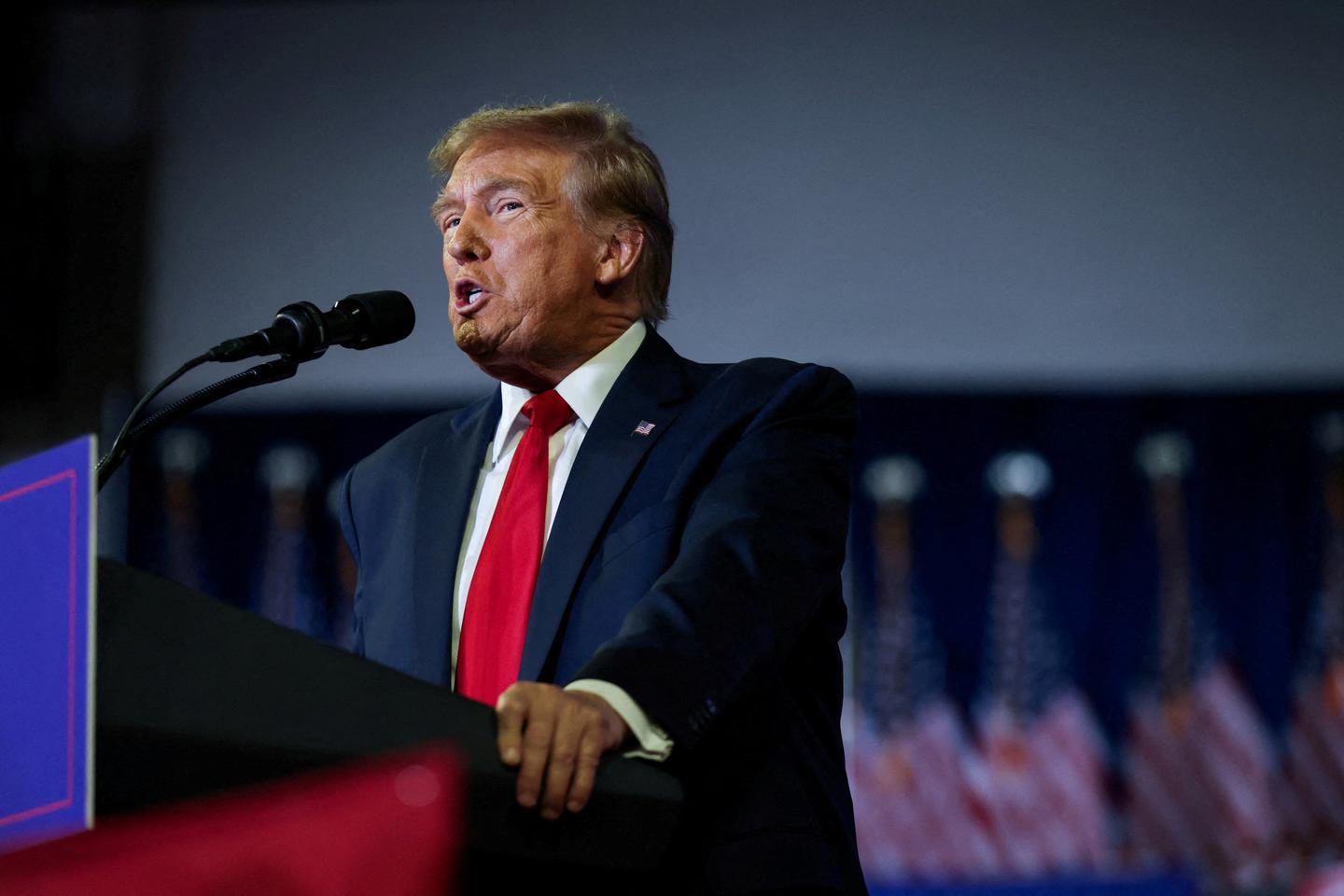


"I said, 'You didn't pay, you're delinquent [...] No, I would not protect you. In fact, I would encourage [the Russians] to do whatever the hell they want.'" This statement made by Donald Trump at an election rally in South Carolina on Saturday, February 10, has provoked strong reactions worldwide, because it undermines the principle of solidarity between North Atlantic Treaty Organization (NATO) member states.
This charge by the Republican primary candidate against America's NATO allies is nothing new: During his presidential term (2017-2021), Trump had already criticized a supposed lack of balance between allies when it came to funding NATO. Yet by talking about "delinquent" allies and "countries [that] owe us a tremendous amount of money from many years back," the former president is fostering some confusion.
Indeed, NATO's direct funding is not at issue here: The €3.8 billion total budget (for 2024), which ensures the operation of the organization and its military commands, is funded by contributions from its members, proportional to their budgetary capabilities and their military requirements. This aspect does not really cause any problems.
The 2% of GDP guideline
Trump's attacks have, in fact, referred to NATO's indirect funding, which is far more substantial. As the alliance has no armed forces of its own, its members supply the organization with the troops and equipment needed for its operations, on a voluntary basis. Each country's own defense capacity is therefore called upon to contribute to the organization's capacity.
To measure this contribution, it has been common practice to compare each country's annual defense spending with its national economic wealth, as represented by its gross domestic product (GDP). This is, according to NATO, an "indicator of a country's political will to contribute to NATO's common defence efforts."
For many years, there was no clear rule setting a minimum level of military spending required of member states. In practice, the US accounted for a substantial share of this military spending, while several other members had tended to reduce theirs.
From 2006 onwards, NATO member states agreed to reverse this trend, by collectively setting themselves the goal of increasing their military budgets to at least 2% of their GDP. Following Russia's annexation of Crimea in 2014, the member states clarified this objective: The aim was then to "move towards the 2% guideline" by 2024, although this rule was not made binding.
By the end of 2023, only 11 of the 31 NATO members had made good on this commitment. France was still slightly behind (1.9%), and Germany even further behind (1.6%). However, Jens Stoltenberg, NATO's Secretary General, declared on February 14 that seven more countries would reach the 2% mark by 2024. Only 13 member states would therefore remain below the target.
Nevertheless, defense budgets are trending upward. Since 2014, every country in the organization has increased theirs – with 8 of them having more than doubled their military spending. While the share of NATO's indirect funding coming from the US has been slightly reduced over this period (from 72% to 68%, adjusted for inflation), the US remains by far the biggest indirect contributor within the alliance, with over $860 billion (€800 billion) allocated to defense out of a total budget of $1,264 billion across all NATO allies.
